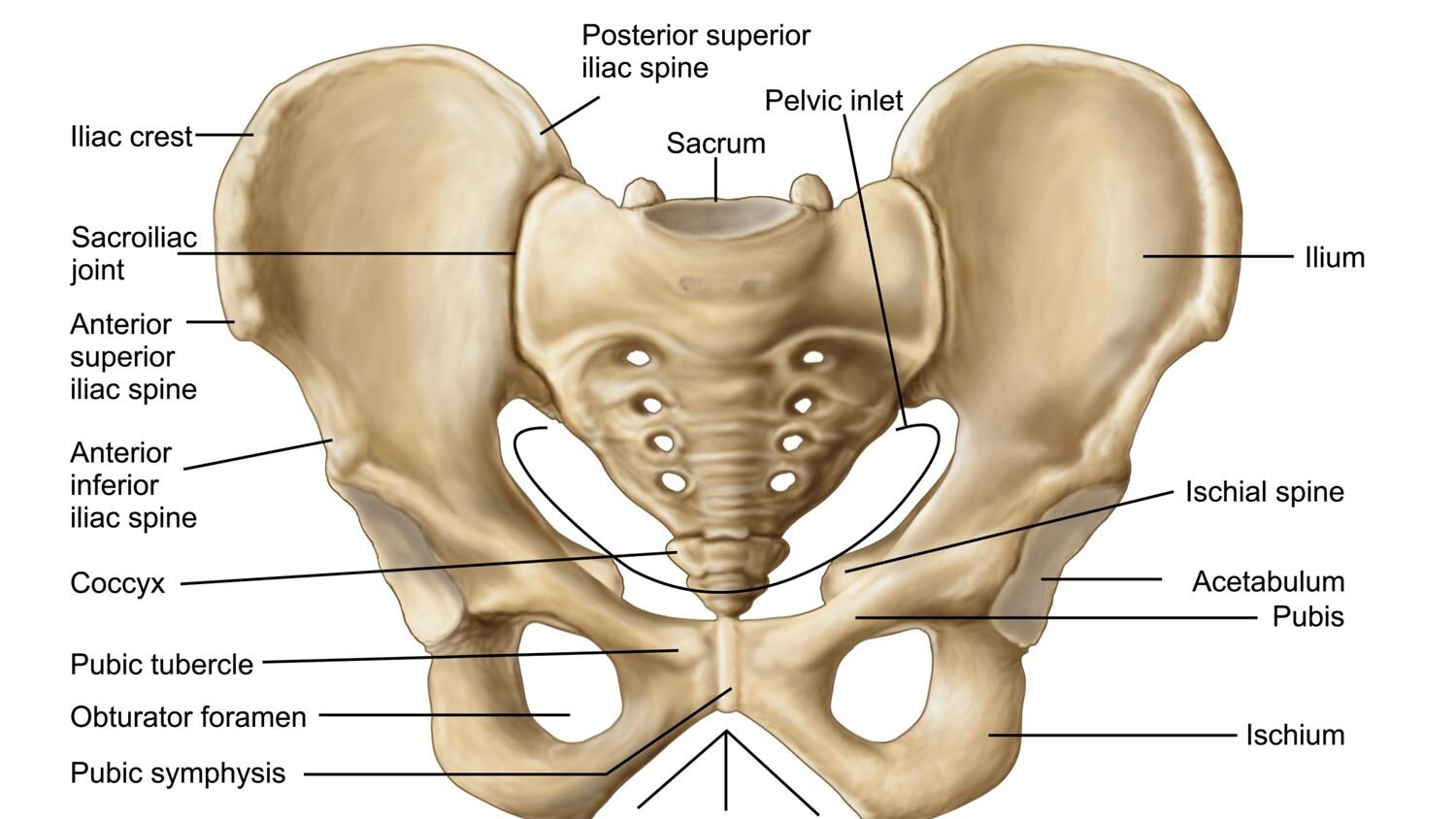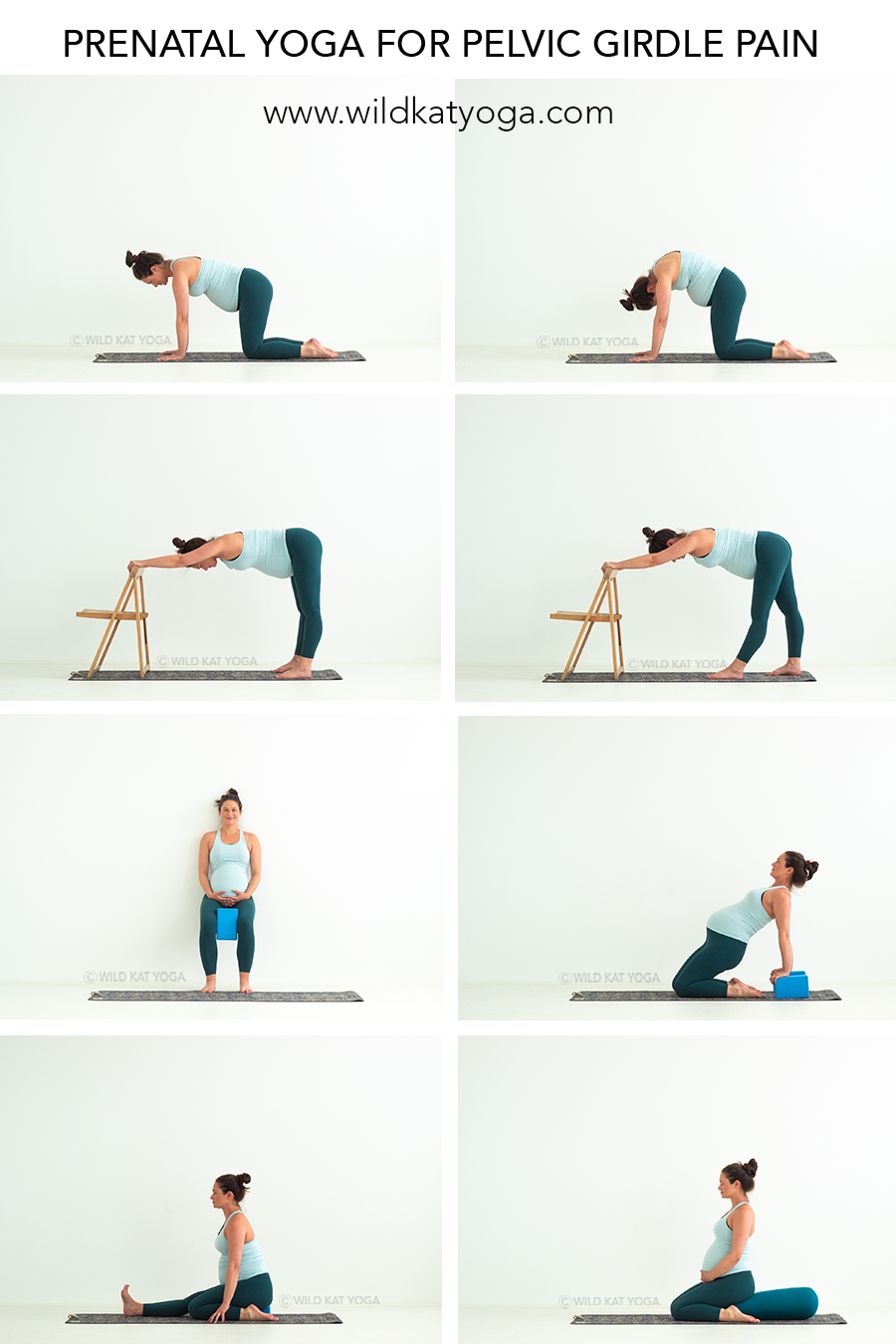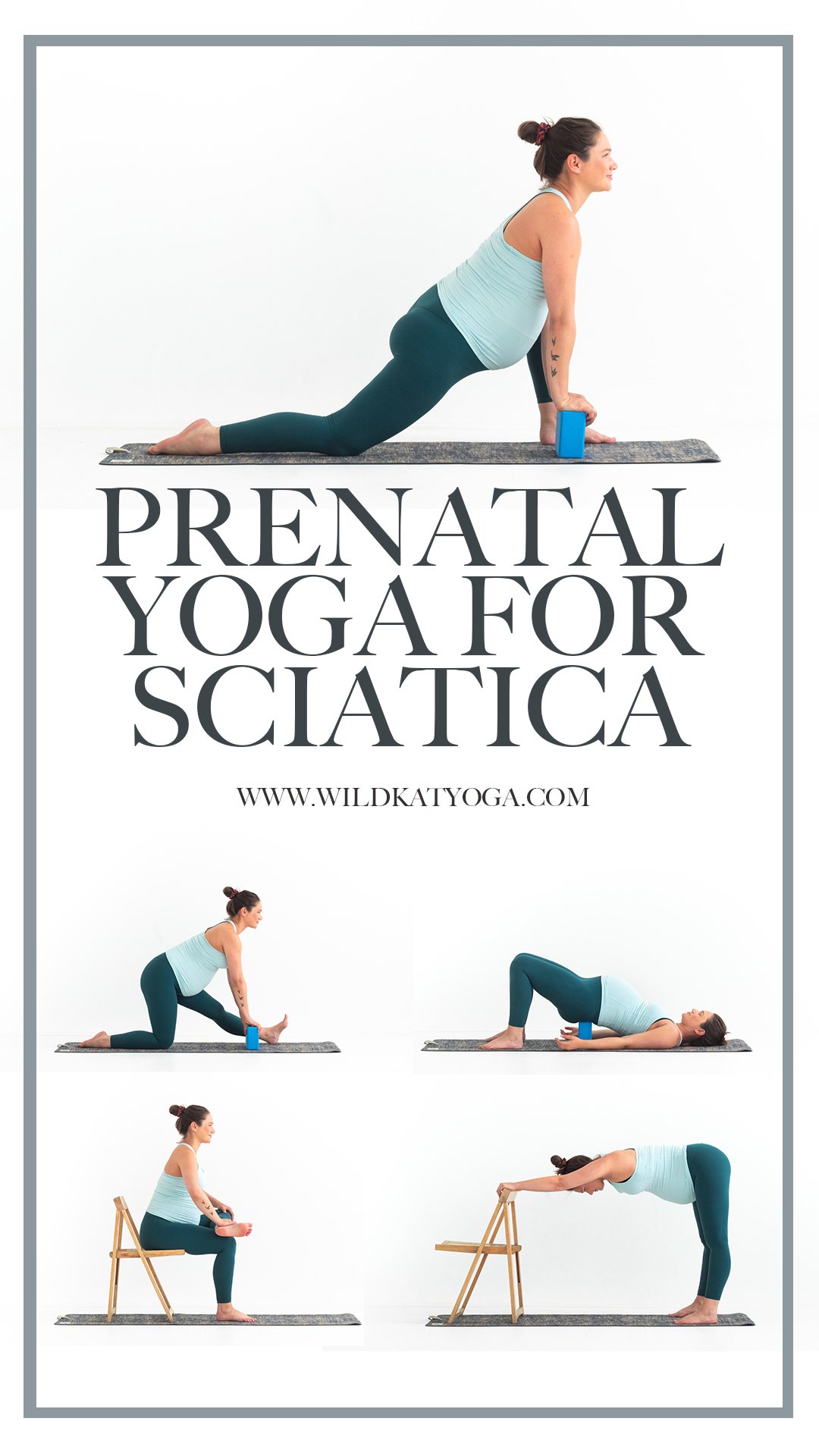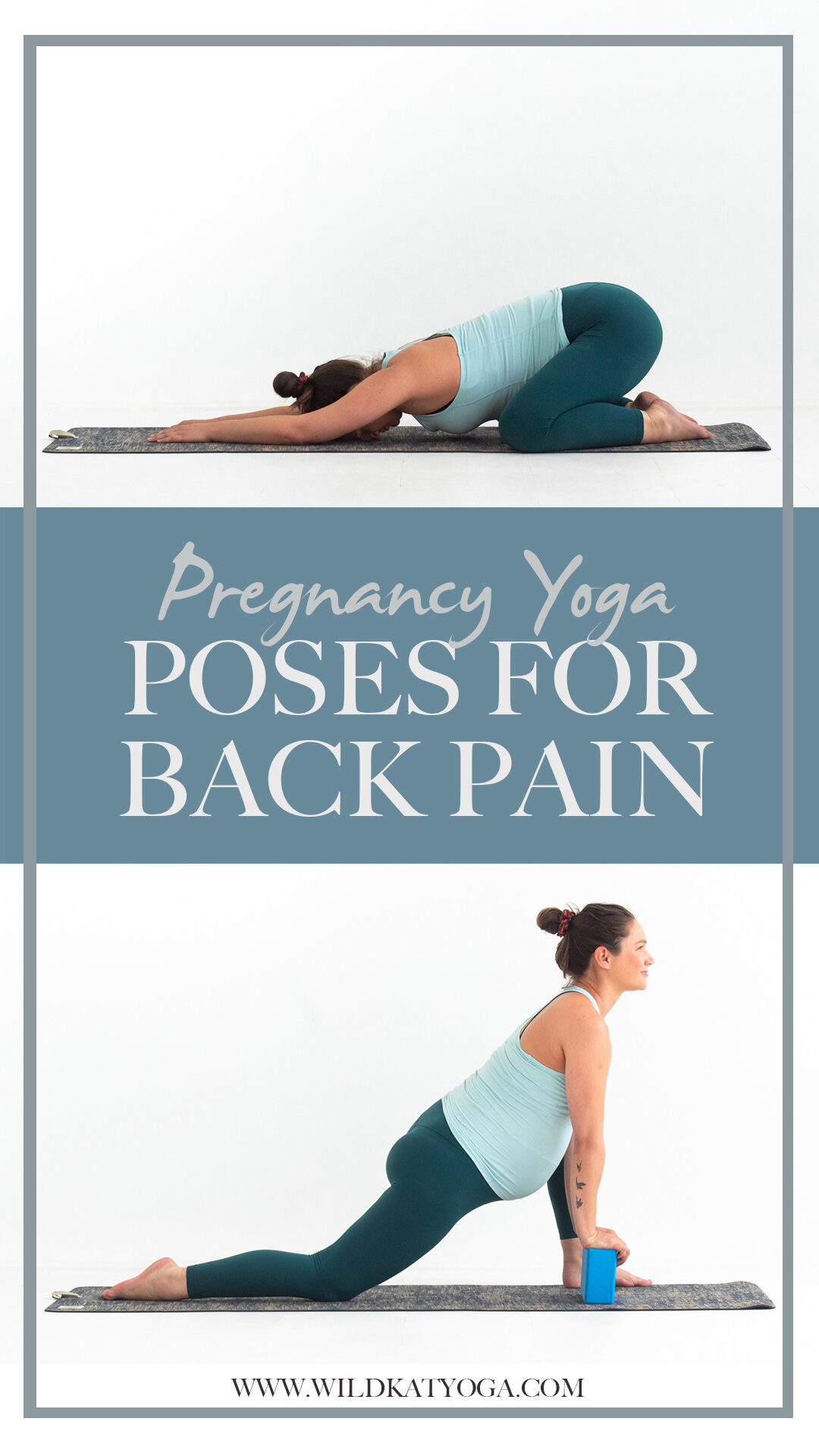How to adjust your yoga practise for Pelvic Girdle Pain
If you’re expecting and unfortunate enough to be diagnosed with Pelvic Girdle Pain (PGP) then you’re not alone! PGP (also known as Pubic Symphasis Disorder) affects up to one in five women and is no fun at all!
WOMEN SUFFERING WITH PELVIC GIRDLE PAIN CAN OFTEN FEEL THE PAIN
in the front-centre of the pelvis - specifically the joint between the pubic bones (the pubic symphysis) as illustrated below. This can be a sharp pain, which comes about when you move or a dull ache.
in the perineum (the space between the anus and vagina)
if left unchecked pain can radiate down the inner thigh, across the glutes and into the lower back
Causes of Pelvic Girdle Pain
It’s important that you go to your GP to get a diagnosis, and it’s likely that they will recommend you visit an osteopath or physiotherapist. There are a number of reasons you could be experiencing PGP including …
Too much flexibility in the hips, causing instability in the joints
Too much tightness in the hips
You may also have just pulled a muscle in the groin, which is what happened to me - but you won’t know until you find out the underlying cause!
I can’t stress enough how important it is to get on top of this early and work closely with your osteopath or physiotherapist throughout your pregnancy. Once you know what is causing your pain you can start to fix it.
For the most part, pelvic girdle pain is caused by too much movement in the joints, resulting in instability in the hips. You can thank relaxin for that! Relaxin is the pregnancy hormone that pumps around your body causing your hips to open so that your body can make space for your growing baby. This is wonderful and a vital process but it means that you’ll need to work a little harder to help stabilise and strengthen your hips if you want to avoid the dreaded Pelvic Girdle Pain!
Yoga Poses for Pelvic Girdle Pain
I can’t stress this enough -if you want to avoid developing Pelvic Girdle Pain, or certainly any kind of hip pain during pregnancy, it’s SO important that your yoga practise includes strengthening and stabilising postures as well as hip-opening postures. It’s the balance of these two that will create the foundation for a healthy and happy pregnancy. My Bump & Flow Prenatal Yoga Classes ensure you have just that and you can start today with a 2-week free trial on Moviing.co, and use the code KAT25 for 25% off your membership.
YOGA ADJUSTMENTS FOR PELVIC GIRDLE PAIN
If you’re already suffering with pelvic girdle pain here are a few ways you can adjust your practise that will, although not heal your PGP, allow you to practise yoga without aggravating it:
Keep your legs together: hip opening poses are out, opt for staff poses, feet together forward folds (or a slight opening as shown below) and virasana (hero pose) or half virasana (one leg hero pose) instead.
Do pelvic floor exercises and hip strengthening exercises so long as they feel comfortable: this really depends on how badly you’re suffering with PGP. If it feels good to continue doing pelvic floor exercises and poses like bridge pose, hero pose lifts (as shown below) and chair pose at the wall (place a block between your knees for added strength) then do so.
Sit on a cushion: hard surfaces will likely not be your friend so always make sure you’re comfy.
Breath! Breathing exercises are one of yoga's most underrated but powerful tools! I wrote all about the power of the breath in pregnancy here, and you can strengthen your deep core muscles to support your PGP just by breathing effectively!
Above all, be kind to yourself Mama. Your body is currently making a whole new person and you’re doing the best you can - that’s more than enough!
Kat xx












My top ten ways to beat pregnancy insomnia so you can get a better night’s sleep